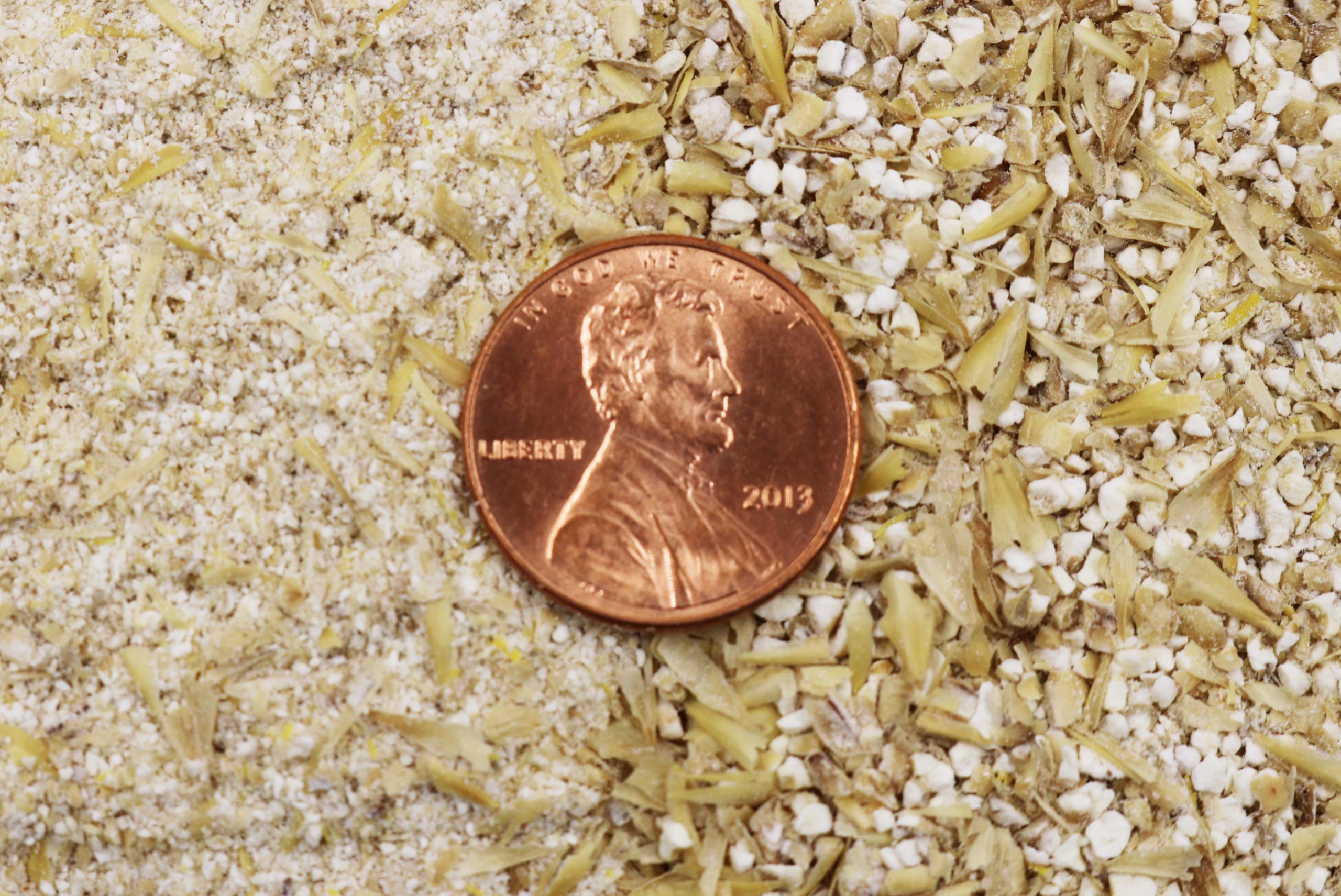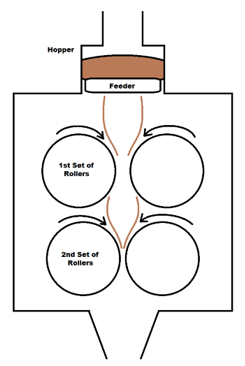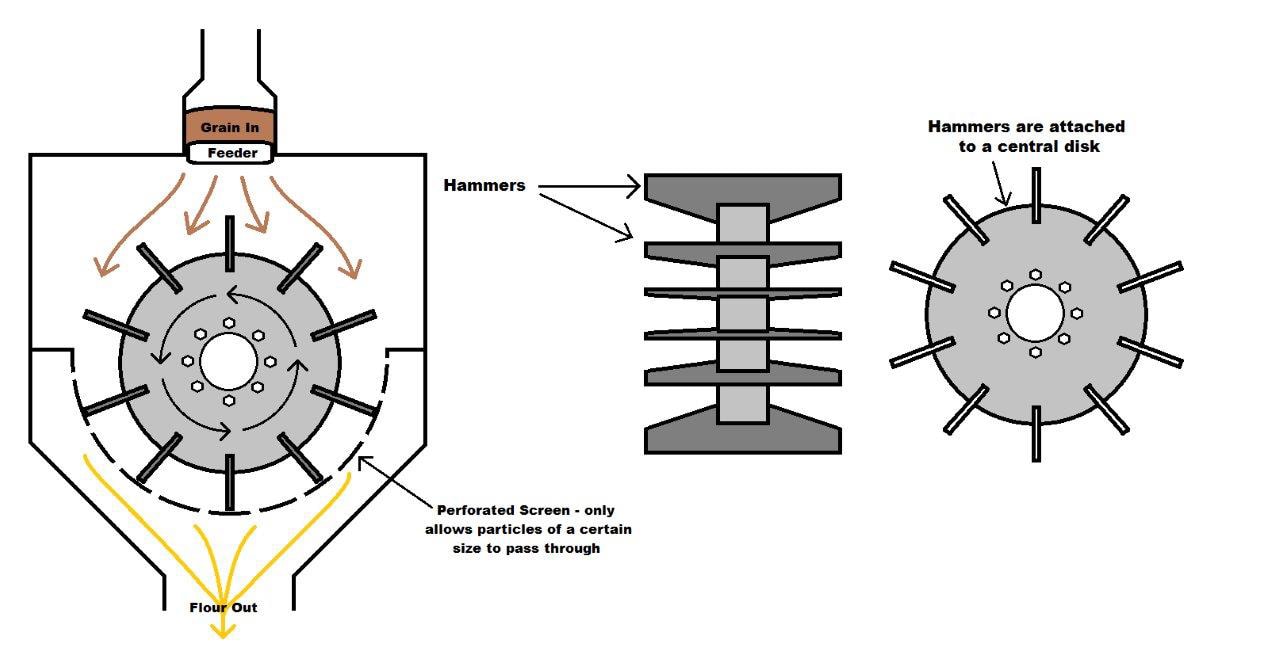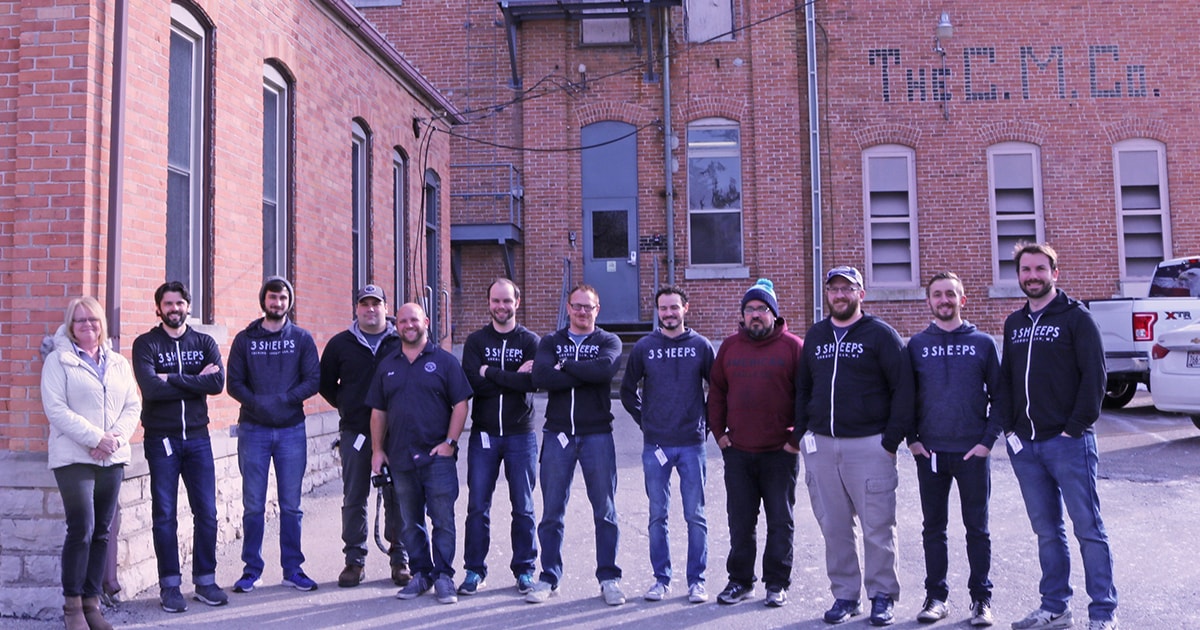
Milling grain is an often-overlooked aspect of brewing and distilling. The goal of milling is to ensure that all the starch stored in the kernel is readily accessible to enzymes for conversion to sugar during the mashing process.
To some, that means grinding the grain into a flour and separating in a mash filter, or not separating the liquid from the flour at all until the alcohol is removed in a still. For many others, it is a more complicated process creating a mix of particle sizes ranging from flour to grit to husk. All those particles will be necessary for obtaining the desired extract and separating the wort from the grain in a lauter, or mash tun.
As each brewery is different, each milling operation is slightly different and becomes more unique over time, through mechanical wear and adjustments. In addition to each milling operation being unique, each type and lot of malt can be slightly different.
Lighter color kilned or dry roasted specialty malts will crush like base malts, while caramel/crystal and extremely dark roasted products are more brittle and tend to shatter rather than crush. Malts that shatter tend to create more flour which can attribute to difficulties during lautering. The fine particles can fill in the spaces in the otherwise permeable bed causing a slowed or stuck lauter.
These brittle specialty malts can typically be milled with a wider mill gap resulting in a larger particle size that will still allow for complete flavor and aroma extraction which is the primary function of these malts. Finding the balance of desired particle size starts with adjusting the mill gaps.

Our RMS 4 roller mill for preground malt has recommended starting gaps set to 4 thousandths of an inch (.102mm), and 3 thousandths of an inch (.076mm). From those starting points we adjust the mill to achieve the desired particle size. While the mill gap is the adjustment made, it is more important to measure the resulting grist.
To create a uniform product between batches and malt styles, we assess the resulting particle size rather than the mill gap. We use particle size because that is what the brewer will be seeing in the finished product and be utilized in their brewhouse. The easiest way to assess the resulting grist is by simple visual evaluation, but the most accurate and repeatable way is to assess the milled grain using the American Society of Brewing Chemists (ASBC) method Malt 15: grist by standard sieve.
It utilizes a series of pans with specific screen sizes to assess the amount of large and small grits all the way to fine flour. To mill each batch, we will pass some grain through the mill, assess it using the sieves, and decide how the mill needs to be adjusted to meet our specifications. We do this for every batch of grain run through the mill for preground products.
While our preground settings are a good starting point, more efficiency can be achieved through experience and learning how fine of a grind will successfully process through a specific brewhouse.
Our 500-barrel brewhouse in the extract plant currently uses a Buhler BM 250, 6 roller mill. Currently, the roller gaps set to 1.981mm, 1.499, and 0.290mm base malt. These settings are adjusted in a similar fashion to our 4 roller preground mill using sieve analysis. Again, here we adjust based on the resulting grist, targeting a finer flour than our preground products.
Through experience, we have found that our lauter tun can handle an increased percentage of flour and fine grits. With the fine grits comes increased efficiency and higher brewhouse yield. The desired level of grind can only be determined through experience and likely a few slow lauters.
If you are using a more modern mash filter or distilling on the grain, you may see improved extract by milling your grain to a flour. While roller mills create a variety of particle sizes, hammer mills create a much finer, more uniform grist. This fine particulate matter maximizes the surface area of the grain allowing maximum availability of starch to the enzymes.

With this level of availability, the maximum amount of extract can be achieved. A hammer mill creates these small particles with the use of multiple rotating “hammers.” They aren’t hammers in the conventional sense, but rather precisely shaped metal plates that spin at a high rate of speed to crush the grain. The grain is held in the milling chamber by a perforated screen. That screen only allows particles of a specific size to pass through and it can be changed to meet the desired particle size specification.
Your brewhouse will be the ultimate decision maker in the quest to increase extract and efficiency through milling. Each adjustment made in milling should be closely monitored for its holistic effects on the brewing process and the finished beer.


